

Kotoku-in is the more common name for Taiizan Kotoku-in Shojosen-ji in Kamakura, Kanagawa Prefecture. This Jodo-shu Buddhist temple is known for its Daibutsu, or great Buddha, which is one of the most famous icons of Japan.
The statue, commonly known as the Kamakura Daibutsu (Big Buddha of Kamakura), is a colossal copper image of the Amitabha Buddha. The Buddha, which was declared a national treasure by the Japanese government, is about 11.3 meters high and weighs about 121 tons.
The Kotoku-in belongs to the Jodo sect, a traditional Buddhist sect founded by the priest Honen (1133-1212) who was a follower of Amitabha. According to the Jodo sect's belief system, all people are equal and one only has to sing the "Nenbutsu" to receive the protection of Amitabha and to be reborn in one's "pure land".
Kamakura’s Daibutsu is a beautiful bronze statue built in the mid-13th century (750 years ago). He has been meditating under the sky for about 500 years of those years, after losing the shelter he was originally housed in. When you visit, you might see him soaked in rain, or sweating under the glaring sun, or just enjoying the warm spring sunshine. Whenever you come, his expressive face will touch your heart. Kamakura’s Daibutsu has been kept intact, without any large-scale restorations since it was built.
The temple gate holds a plaque inscribed with Kotoku-in’s official name and houses a pair of Nio (Vajrapani) images inside the gate. Their fearsome faces are the subject of many visitor's photographs. The Nio were imported from another location in the 18th century.
On the inside wall of the corridor to the right facing the Great Buddha rests a pair of huge warazori. The warazori were first woven by children in 1951 with the wish that “the Great Buddha would don them to walk around Japan, bringing happiness to the people.” The Matsuzaka Children’s Club keeps this tradition alive to this day: since 1956, they have continued to make these giant warazori and present them to Kotoku-in once every few years.
A 5-10 minute walk from Hase Station on the Enoden Railway Line.

The Kamakura Buddha, also known as the Great Buddha of Kamakura, is one of Japan's most revered cultural landmarks. Located at Kotoku-in, a Buddhist temple located in the coastal city of Kamaku...

Taisen-kaku is a 100-year-old inn just seconds away from Hase Kanon Temple. The service they provide will leave you with a memorable experience of your time in Kamakura.
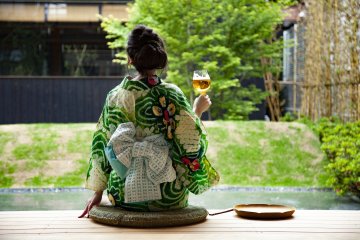
Kishi-ke is traditional, yet modern, Japanese-style inn that aims to connect guests with the present and help them achieve inner harmony through its peaceful design and cultural experiences.

Fujisawa is located close to such popular tourist destinations as Enoshima and makura. A traveler can get everything necessary for a comfortable rest in a room.
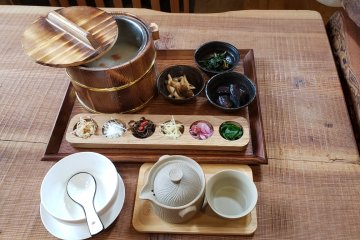
Using animal-free products, brown rice, and locally sourced fresh vegetables, Ki to Toki creates masterful vegetarian meals that are not only delicious but a pleasure to look at. Try their set of 17 different dishes and fermented drinks with dessert and herbal tea or coffee after the meal.
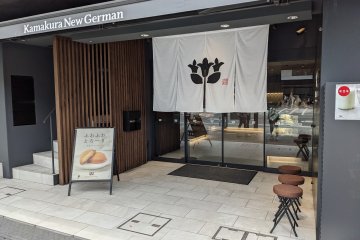
Discover the taste that Kamakura locals are in love with. New German's fluffy custard-filled sponge cakes are a dessert that is sure to impress. The caramel custard flavor is especially popular with visitors.

Taste Aratama's famous fried pork cutlet and fall in love with the fresh flavors. Tonkatsu isn't all that's on the menu. Be sure to try Aratama's other dishes like mozzarella menchi katsu and cream croquette.
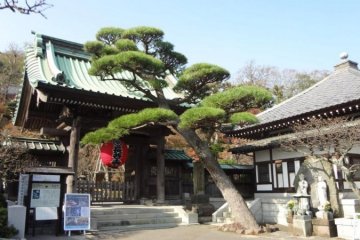
Kamakura’s Hasedera Temple, a sister temple to Nara’s temple of the same name, is renowned for its 11-headed statue of Kannon, the goddess of mercy. This Jodo-sect Buddhist temple is one of the oldest temples in the city and has roots in the eighth century. Legend has it that the monk Tokudo Shonin requested two Kannon statues to be made from a camphor tree in 721. The smaller statue was enshrined at Nara’s temple, while the other one was thrown into the sea as an offering. In 736, the statue washed ashore in Kamakura, and Hasedera was built to enshrine it. Hasedera’s grounds feature a harmonious display of traditionally designed temple buildings interwoven with lush nature and seasonal flowers, making for a peaceful stroll. Thanks to its elevated position, it also offers wonderful views of Kamakura’s townscape and Sagami Bay. The temple’s artfully crafted nature is on full display when you first enter the grounds. The welcoming garden features a pond encircled by plants, the small Benten-do Hall, dedicated to the goddess of music and wisdom, and Benten-kutsu Cave, which contains carved statues of deistic Buddhist figures. If you are hungry, refuel at the temple’s Teraya Cafe, located just before the entrance, or Kaikoan, which is built at an elevated level and boasts large windows with fantastic views of the area. Admission to the temple costs 400 yen for adults and 200 yen for children (ages 6 to 11). Parking costs 350 yen for 30 minutes.
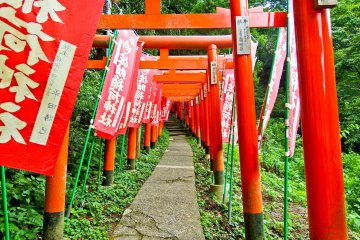
Sasuke Inari Shrine is a Shinto shrine in Kamakura and the site of the Hidden Village of Kamakura. It is located very near the Zeniarai Benzaiten Ugafuku Shrine. [Wikipedia]
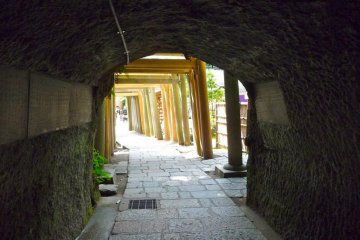
Zeniarai Benzaiten Ugafuku Shrine, popularly known simply as Zeniarai Benten, is a Shinto shrine in Kamakura, Kanagawa, Kanagawa prefecture, Japan. In spite of its small size, it is the second most popular spot in Kamakura, Kanagawa prefecture after Tsurugaoka Hachiman-gū. [Wikipedia]